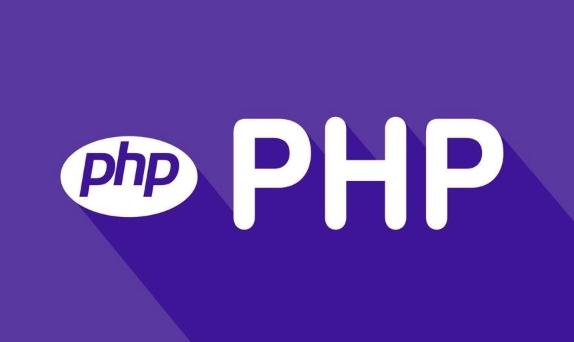There are key differences between CLI PHP and Web PHP in configuration files, execution environments, error handling and usage scenarios. 1. Different configuration files, CLI usually uses /etc/php/8.x/cli/php.ini, while Web PHP uses such as /etc/php/8.x/apache2/php.ini, resulting in inconsistent settings such as display_errors; 2. Different execution environments, CLI runs on end users, and Web PHP runs on web server users (such as www-data), affecting permissions, environment variables and input and output methods; 3. Different error handling methods, CLI displays detailed error information by default, and Web PHP may record errors in logs rather than displaying them in the browser; 4. Different usage scenarios, CLI is suitable for command-line tasks such as timed jobs and unit tests, and Web PHP is used to handle HTTP requests and service dynamic content.

When you're working with PHP, it's easy to assume that the language behaves the same whether you're running it from the command line or through a web server. But in practice, CLI PHP and Web PHP have some important differences that can affect how scripts behave, what configurations are active, and even how errors are handled.

Let's break down the key distinctions so you know what to expect when switching between environments.
Configuration Files Can Be Different
One of the first things you might notice is that CLI PHP often uses a different php.ini file than Web PHP.

- When you run PHP from the terminal using
php, it typically loads a configuration file like/etc/php/8.x/cli/php.ini. - When PHP runs via Apache or Nginx, it usually uses something like
/etc/php/8.x/apache2/php.inior/etc/php/8.x/fpm/php.ini.
This means settings like display_errors , error_reporting , or memory_limit might be set differently depending on which environment you're in.
? A common gotcha: You might not see errors displayed in the browser because display_errors is turned off in the web version, but it's enabled in the CLI version, so they show up in your terminal.

You can check which config file is being used by running:
php --ini # for CLI
And in a script accessed through the web:
<?php phpinfo();
Execution Context and Environment Variables Vary
CLI PHP runs in a shell environment, while Web PHP runs under the web server user (like www-data ).
This affects:
- File system permissions — scripts may have different access to files and directories.
- Environment variables — some variables available in the shell aren't present in the web context and vice versa.
- User interaction — CLI scripts can read input from the terminal (
fgets(STDIN)), while web scripts rely on HTTP requests.
For example, if you're writing a script that needs to read user input or output progress bars, those features only make sense in the CLI world.
Also, paths can behave differently. Relative paths in web scripts are relative to the document root or current script path, while in CLI, they're relative to where you're running the script from.
Error Handling and Output Are Treated Differently
Error handling in CLI and Web PHP can lead to different behaviors, especially during debugging.
In CLI :
- Errors and notices are usually printed directly to the terminal.
- The default error reporting level tends to be more verbose.
In Web PHP :
- Errors might be logged to a file instead of shown in the browser.
- Settings like
display_errorsandlog_errorsdetermine what happens.
So if a script works fine in the terminal but shows a blank page in the browser, it's likely due to an error that's being suppressed or logged elsewhere.
? Tip: Always check the web server's error log if something isn't behaving as expected. In many settings, it'll be something like /var/log/apache2/error.log or /var/log/nginx/error.log .
Performance and Use Cases Aren't the Same
CLI PHP is great for tasks that don't involve HTTP requests:
- Cron jobs
- Data imports/exports
- Long-running processes
- Unit tests
Web PHP, on the other hand, handles:
- HTTP requests
- Serving dynamic content
- Managing sessions and cookies
Because CLI scripts don't go through the overhead of a web request, they can sometimes perform better for background processing.
Also, timeouts work differently. Web scripts often have a time limit (like 30 seconds by default), while CLI scripts can run indefinitely unless explicitly configured otherwise.
Basically that's it. The difference between CLI and Web PHP seems to be small, but in actual development and debugging, it often brings confusion about "why can't you run in this environment in that environment". Understanding the differences between them can help you troubleshoot problems more efficiently and make more appropriate design choices when writing scripts.
The above is the detailed content of What is the Difference Between CLI PHP and Web PHP?. For more information, please follow other related articles on the PHP Chinese website!

Hot AI Tools

Undress AI Tool
Undress images for free

Undresser.AI Undress
AI-powered app for creating realistic nude photos

AI Clothes Remover
Online AI tool for removing clothes from photos.

Clothoff.io
AI clothes remover

Video Face Swap
Swap faces in any video effortlessly with our completely free AI face swap tool!

Hot Article

Hot Tools

Notepad++7.3.1
Easy-to-use and free code editor

SublimeText3 Chinese version
Chinese version, very easy to use

Zend Studio 13.0.1
Powerful PHP integrated development environment

Dreamweaver CS6
Visual web development tools

SublimeText3 Mac version
God-level code editing software (SublimeText3)
 PHP Variable Scope Explained
Jul 17, 2025 am 04:16 AM
PHP Variable Scope Explained
Jul 17, 2025 am 04:16 AM
Common problems and solutions for PHP variable scope include: 1. The global variable cannot be accessed within the function, and it needs to be passed in using the global keyword or parameter; 2. The static variable is declared with static, and it is only initialized once and the value is maintained between multiple calls; 3. Hyperglobal variables such as $_GET and $_POST can be used directly in any scope, but you need to pay attention to safe filtering; 4. Anonymous functions need to introduce parent scope variables through the use keyword, and when modifying external variables, you need to pass a reference. Mastering these rules can help avoid errors and improve code stability.
 How to handle File Uploads securely in PHP?
Jul 08, 2025 am 02:37 AM
How to handle File Uploads securely in PHP?
Jul 08, 2025 am 02:37 AM
To safely handle PHP file uploads, you need to verify the source and type, control the file name and path, set server restrictions, and process media files twice. 1. Verify the upload source to prevent CSRF through token and detect the real MIME type through finfo_file using whitelist control; 2. Rename the file to a random string and determine the extension to store it in a non-Web directory according to the detection type; 3. PHP configuration limits the upload size and temporary directory Nginx/Apache prohibits access to the upload directory; 4. The GD library resaves the pictures to clear potential malicious data.
 Commenting Out Code in PHP
Jul 18, 2025 am 04:57 AM
Commenting Out Code in PHP
Jul 18, 2025 am 04:57 AM
There are three common methods for PHP comment code: 1. Use // or # to block one line of code, and it is recommended to use //; 2. Use /.../ to wrap code blocks with multiple lines, which cannot be nested but can be crossed; 3. Combination skills comments such as using /if(){}/ to control logic blocks, or to improve efficiency with editor shortcut keys, you should pay attention to closing symbols and avoid nesting when using them.
 How Do Generators Work in PHP?
Jul 11, 2025 am 03:12 AM
How Do Generators Work in PHP?
Jul 11, 2025 am 03:12 AM
AgeneratorinPHPisamemory-efficientwaytoiterateoverlargedatasetsbyyieldingvaluesoneatatimeinsteadofreturningthemallatonce.1.Generatorsusetheyieldkeywordtoproducevaluesondemand,reducingmemoryusage.2.Theyareusefulforhandlingbigloops,readinglargefiles,or
 Tips for Writing PHP Comments
Jul 18, 2025 am 04:51 AM
Tips for Writing PHP Comments
Jul 18, 2025 am 04:51 AM
The key to writing PHP comments is to clarify the purpose and specifications. Comments should explain "why" rather than "what was done", avoiding redundancy or too simplicity. 1. Use a unified format, such as docblock (/*/) for class and method descriptions to improve readability and tool compatibility; 2. Emphasize the reasons behind the logic, such as why JS jumps need to be output manually; 3. Add an overview description before complex code, describe the process in steps, and help understand the overall idea; 4. Use TODO and FIXME rationally to mark to-do items and problems to facilitate subsequent tracking and collaboration. Good annotations can reduce communication costs and improve code maintenance efficiency.
 How to access a character in a string by index in PHP
Jul 12, 2025 am 03:15 AM
How to access a character in a string by index in PHP
Jul 12, 2025 am 03:15 AM
In PHP, you can use square brackets or curly braces to obtain string specific index characters, but square brackets are recommended; the index starts from 0, and the access outside the range returns a null value and cannot be assigned a value; mb_substr is required to handle multi-byte characters. For example: $str="hello";echo$str[0]; output h; and Chinese characters such as mb_substr($str,1,1) need to obtain the correct result; in actual applications, the length of the string should be checked before looping, dynamic strings need to be verified for validity, and multilingual projects recommend using multi-byte security functions uniformly.
 Quick PHP Installation Tutorial
Jul 18, 2025 am 04:52 AM
Quick PHP Installation Tutorial
Jul 18, 2025 am 04:52 AM
ToinstallPHPquickly,useXAMPPonWindowsorHomebrewonmacOS.1.OnWindows,downloadandinstallXAMPP,selectcomponents,startApache,andplacefilesinhtdocs.2.Alternatively,manuallyinstallPHPfromphp.netandsetupaserverlikeApache.3.OnmacOS,installHomebrew,thenrun'bre
 Learning PHP: A Beginner's Guide
Jul 18, 2025 am 04:54 AM
Learning PHP: A Beginner's Guide
Jul 18, 2025 am 04:54 AM
TolearnPHPeffectively,startbysettingupalocalserverenvironmentusingtoolslikeXAMPPandacodeeditorlikeVSCode.1)InstallXAMPPforApache,MySQL,andPHP.2)Useacodeeditorforsyntaxsupport.3)TestyoursetupwithasimplePHPfile.Next,learnPHPbasicsincludingvariables,ech






